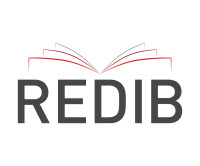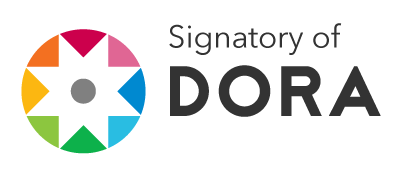La obra de arte como experimento metasemiótico
Resumen
¿Qué es la experimentación artística? ¿Cómo son los experimentos artísticos experimentos? Este trabajo trata sobre la ontología de la obra de arte. Aquí, el arte se define como un experimento metasemiótico, un proceso de signos que investiga un proceso de signos. Definimos este metanivel como un fenómeno semiótico de autoinspección. Los artistas, al igual que los espectadores, están inmersos en procesos autoorganizados. No son los tutores de procesos semióticos, sino sus participantes. Para estructurar este argumento, proponemos, basados en el modelo de semiosis (acción del signo) de C.S. Peirce, una tipología: los experimentos artísticos se centran en el signo, en el objeto o en los efectos interpretativos (intérpretes) de la semiosis, que son las variables que aíslan. Ejemplificamos esta tipología con los casos históricos del Grupo Ruptura, de los artistas Cildo Meireles y Lygia Clark.
Descargas
Citas
Atã, P., e Queiroz, J. (2021). Nicho de artefatos semióticos e externalismo cognitivo. Revista DeSignis, 35, pp. 211-227.
Atã, P., e Queiroz, J. (2019). Semiosis is cognitive niche construction. Semiotica, 228, pp. 3–16.
Atã, P. (2020). Surprise Between Media, Minds and World: A Peircean process semiotic approach. Doctoral thesis, monograph. Linnaeus University, Faculty of Arts and Humanities, Department of Film and Literature.(LNUC Intermedial and multimodal studies, IMS)
Atkin Albert. (2016). Peirce, London, Routledge.
Bense, M. (1958). Das Existenzproblem der Kunst. Augenblick, Stuttgart-Darmstadt, n. 1, März.
running, J. (1997). Genuine triads and teridentity. Em N. Houser, D. Roberts & J. Evra (Eds.), Studies in the Logic of Charles Sanders Peirce (pp. 252-270). Indiana: Indiana University Press.
Burch, R. W. (1997). Peirce’s Reduction Thesis, Em N. Houser, D. Roberts & J. Van Evra (Eds.), Studies in the Logic of Charles S. Peirce (pp. 234-251). Indiana: Indiana University Press.
Campos, H. de. (2011). Da transcriação poética e semiótica da operação tradutora. FALE-UFMG.
De Tienne, A. (2005). Information in Formation, Cognitio, vol.6, no.2, pp. 149-165.
Debrock, G. (1996). Information and the metaphysical status of the sign, Em V. Colapietro & T. Olshewsky (Eds.). Peirce's Doctrine of Signs – theory, applications, and connections (pp. 80-89). Berlin: Mouton de Gruyter.
Debrun, M. (2018). The Idea of Self-Organization. Em A. Pereira Junior, R. Ribeiro Gudwin e W. Pickering (Eds.), Systems, Self-Organisation and Information: An Interdisciplinary Perspective (pp.7–22). London: Routledge.
Eco, U. (2002). Sulla Letteratura. Milano: Bompiani.
Esposito, J. (2005). Synechism: the Keystone of Peirce’s Metaphysics. Em M. Bergman e J. Queiroz (Eds.), The Commens Encyclopedia: The Digital Encyclopedia of Peirce Studies. New Edition. Recuperado de
GRUPO Ruptura. (2023) Em ENCICLOPÉDIA Itaú Cultural de Arte e Cultura Brasileira. São Paulo: Itaú Cultural. Recuperado de:
http://enciclopedia.itaucultural.org.br/grupo538325/grupo-ruptura
Gudwin, R., e Queiroz, J. (2023). Systems Theory and Semiotics. Em J. Pelkey & .P. Cobley (Eds.). Bloomsbury Semiotics Volume 4: Semiotic Movements (pp. 87–102). Bloomsbury Academic.
Hacking, I. (1983). Representing and Intervening: Introductory Topics in the Philosophy of Natural Science. Cambridge University Press.
Houser, N. (1997). Introduction: Peirce as a Logician. Em N. Houser, D. Roberts & J. Van Evra (Eds.). Studies in the Logic of Charles Sanders Peirce (pp. 1-22). Indiana: Indiana University Press.
Jakobson, R., Pomorska, K. (1988). Dialogues. Cambridge: MIT Press.
Livingston, P. (2021). History of the Ontology of Art. The Stanford Encyclopedia of Philosophy (Fall 2021), E. Zalta (ed.),
Recuperado de https://plato.stanford.edu/archives/fall2021/entries/art-ontology-history/
Morris, C. W. (1971). Writings on the General Theory of Signs. Den Haag, Mouton.
Murphy, A. (2021). The Extended Mind: The power of thinking outside the brain. Boston: Houghton Mifflin Harcourt.
Noe, A. (2016). Strange tools: Art and Human Nature. Farrar, Strauss & Giroux.
Peirce, C. S. (EP1, 1992; EP2, 1998), The Essential Peirce: Selected Philosophical Writings, vol. 1 N. Houser & C. Kloesel (eds); vol. 2 ed. by the Peirce Edition Project, (Bloomington and Indianapolis, Indiana University Press.) (citado como EP, followed by volume and paragraph.)
Peirce C. S. (1931-1935), The Collected Papers of C. S. Peirce, vols. I-VI. eds. C. Hartshorne & P. Weiss, Cambridge, Harvard University Press, 1931-1935]; vols. VII-VIII [A. W. Burks (ed.), same publisher, 1958], Charlottesville, Intelex Corporation. (citado como CP, followed by volume and paragraph.)
Peirce, C. S. (1967). Annotated Catalogue the Papers of C.S. Peirce. R. S. Robin (ed.), Massachusetts, The University of Massachusetts Press. (citado como MS, seguido pelo número do manuscrito.)
Pickering, A. (2016). Art, Science and Experiment. MaHKUscript: Journal of Fine Art Research, 1(1), pp. 1–6. https://doi.org/10.5334/mjfar.2
Pickering A (2019) Poiesis in action: doing without knowledge. Em Epple M, Imhausen A, Müller F (Eds). Weak knowledge: forms, functions, and dynamics (pp. 61–84). Frankfurt: Campus Verlag.
Queiroz, J. & El-Hani, C. (2006). Semiosis as an emergent process. Transaction of C.S.Peirce Society, 42(1), pp. 78-116.
Queiroz, J., Atã, P. (2022). Artwork Authorship as a Sign-in-Action. Em P. McNamara, A.J.I. Jones & M.A. Brown (Eds). Agency, Norms, Inquiry, and Artifacts: Essays in Honor of Risto Hilpinen. Synthese Library, vol 454. Springer, Cham.
Queiroz, J. (2023). Charles Sanders Peirce, Cognição e Ação do Signo – da fenomenologia aos substratos neurobiológicos da semiose. Curitiba: Kotter Editorial.
Shklovsky, V. (1917/1965). Art as technique. Em L.T. Lemon & M.J. Reis (eds.), Russian Formalist Criticism: Four essays, pp. 3–24. Lincoln: University of Nebraska Press.
Zeman, J. (1977). The esthetic sign in Peirce’s semiotic, Semiotica, 19(3-4), pp. 241-58.
Derechos de autor 2024 Pedro Atã, João Queiroz

Esta obra está bajo licencia internacional Creative Commons Reconocimiento 4.0.







.jpg)




















